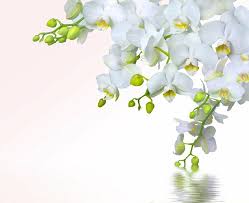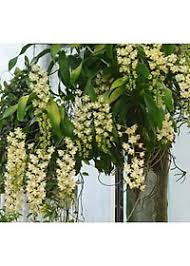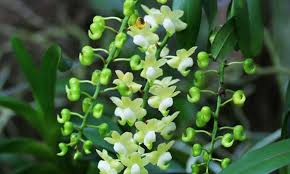
The White Egg Orchid (*Dendrobium crumenatum*), known for its stunning white flowers and enchanting fragrance, is a popular choice among orchid enthusiasts. This tropical beauty not only adds elegance to any floral arrangement but also symbolizes purity and renewal, making it an ideal gift during special occasions and festivals. If you want to ensure that your White Egg Orchids bloom just in time for holidays and celebrations, you must follow specific care and timing techniques. This comprehensive guide will delve into the essential tips and tricks for cultivating and nurturing your White Egg Orchids to achieve perfect blooms for festive occasions.
## Table of Contents
1. **Introduction to White Egg Orchids**
– 1.1 Characteristics of White Egg Orchids
– 1.2 Cultural Significance
2. **Understanding the Blooming Cycle**
– 2.1 Natural Blooming Patterns
– 2.2 Factors Influencing Blooming
3. **Preparing for Flowering**
– 3.1 Selecting the Right Time for Planting
– 3.2 Choosing the Right Environment
4. **Essential Care for White Egg Orchids**
– 4.1 Light Requirements
– 4.2 Watering Techniques
– 4.3 Fertilization Schedule
– 4.4 Temperature and Humidity Control
5. **Techniques to Encourage Early Blooms**
– 5.1 Pruning and Maintenance
– 5.2 Potting and Repotting
– 5.3 Stress Induction Techniques
6. **Holiday-Specific Care Tips**
– 6.1 Preparing for Christmas
– 6.2 Celebrating Lunar New Year
– 6.3 Other Special Occasions
7. **Troubleshooting Common Problems**
– 7.1 Pests and Diseases
– 7.2 Environmental Stressors
8. **Conclusion**
—
## 1. Introduction to White Egg Orchids
### 1.1 Characteristics of White Egg Orchids
The White Egg Orchid is a unique member of the orchid family, distinguished by its elegant, egg-shaped flowers that bloom in clusters. Each flower is typically pure white, exuding a sweet fragrance that is most potent in the evening. This orchid is not only visually appealing but also relatively easy to care for, making it an excellent choice for both novice and experienced gardeners.
### 1.2 Cultural Significance
In various cultures, the White Egg Orchid is associated with purity, elegance, and renewal. It is often given as a gift during special occasions, including weddings, anniversaries, and festivals. The orchid’s striking appearance and delightful scent make it a popular choice for floral arrangements and decorations during significant events.
—
## 2. Understanding the Blooming Cycle
### 2.1 Natural Blooming Patterns
White Egg Orchids typically bloom in late winter to early spring, aligning with the warm, humid conditions that promote flower development. Understanding this natural cycle is essential for gardeners aiming to time their blooms for specific holidays or celebrations.
### 2.2 Factors Influencing Blooming
Several factors can influence the blooming of White Egg Orchids, including:
– **Light:** Adequate light is crucial for flower development.
– **Water:** Proper watering practices help ensure healthy growth.
– **Temperature:** Maintaining optimal temperatures supports blooming.
– **Nutrients:** Regular feeding encourages vigorous growth and flowering.
—
## 3. Preparing for Flowering
### 3.1 Selecting the Right Time for Planting
If you want your White Egg Orchids to bloom for specific holidays, you must plan your planting time accordingly. Ideally, plant your orchids several months before the desired bloom date, allowing sufficient time for growth and flowering.
– **For Christmas Blooms:** Plant in late summer to early fall.
– **For Lunar New Year Blooms:** Plant in late fall to early winter.
### 3.2 Choosing the Right Environment
Creating an optimal environment for your orchids is vital for successful blooming. Consider the following factors:
– **Location:** Select a spot with bright, indirect sunlight. South-facing windows are ideal, as they provide ample light without direct sun exposure, which can scorch the leaves.
– **Humidity:** White Egg Orchids thrive in high humidity. Consider using a humidifier or placing a pebble tray filled with water under the pots to maintain humidity levels.
—
## 4. Essential Care for White Egg Orchids
### 4.1 Light Requirements
White Egg Orchids require bright, indirect light to encourage healthy growth and blooming. Aim for around 4-6 hours of filtered sunlight daily. If natural light is limited, consider using grow lights to supplement light exposure, especially during winter months.
### 4.2 Watering Techniques
Watering practices play a crucial role in the health of your orchids. Follow these guidelines:
– **Watering Frequency:** Water the orchids when the top inch of the potting mix feels dry. This typically translates to watering every 5-10 days, depending on the environment.
– **Watering Method:** Water thoroughly until water drains out of the bottom of the pot, ensuring that the roots receive adequate moisture while preventing root rot.
### 4.3 Fertilization Schedule
Proper fertilization is key to promoting vigorous growth and abundant blooms. Use a balanced orchid fertilizer, following these tips:
– **Growing Season (Spring and Summer):** Fertilize every 2-4 weeks to support healthy growth and blooming.
– **Dormant Season (Fall and Winter):** Reduce fertilization to once every 6-8 weeks, as the plant requires fewer nutrients during this time.
### 4.4 Temperature and Humidity Control
Maintaining optimal temperature and humidity levels is vital for blooming.
– **Temperature:** White Egg Orchids thrive in temperatures between 65°F and 85°F (18°C to 29°C) during the day and slightly cooler at night. Avoid exposing the orchids to extreme temperature fluctuations.
– **Humidity:** Aim for humidity levels of 50-70%. Use humidifiers or mist the plants regularly to maintain adequate humidity.
—
## 5. Techniques to Encourage Early Blooms
### 5.1 Pruning and Maintenance
Regular pruning is essential for promoting healthy growth and maximizing flower production. Follow these tips:
– **Prune Dead Flowers:** After the flowering season, cut back any dead flower spikes to encourage new growth and blooms.
– **Inspect for Pests:** Regularly check for signs of pests or diseases, such as discolored leaves or webbing. Treat any infestations promptly.
### 5.2 Potting and Repotting
– **Potting:** Choose containers with drainage holes and use a well-draining orchid potting mix, which typically consists of bark, perlite, and sphagnum moss.
– **Repotting:** Repot every 1-2 years to refresh the potting mix and provide adequate space for growth. The best time to repot is after the blooming cycle, ensuring the plant is not stressed during this process.
### 5.3 Stress Induction Techniques
Certain stress induction techniques can encourage earlier blooming:
– **Temperature Fluctuations:** Gradually lower the temperature at night to simulate natural environmental changes, which can trigger blooming.
– **Watering Reduction:** Slightly reduce watering for a short period to stress the plant, prompting it to bloom in response.
—
## 6. Holiday-Specific Care Tips
### 6.1 Preparing for Christmas
To ensure your White Egg Orchids bloom beautifully for Christmas, consider the following tips:
– **Planting Timeline:** Plant in late summer, ensuring sufficient time for growth and blooming.
– **Decorative Pots:** Consider using festive pots or decorative containers to enhance the aesthetic appeal of your orchids during the holiday season.
### 6.2 Celebrating Lunar New Year
The White Egg Orchid is a popular choice for Lunar New Year celebrations. To prepare your orchids for this occasion:
– **Timing:** Plant in late fall to ensure blooms coincide with the holiday.
– **Traditional Symbolism:** Incorporate the orchids into traditional decorations to symbolize purity and renewal during the New Year festivities.
### 6.3 Other Special Occasions
Whether it’s anniversaries, weddings, or other celebrations, the White Egg Orchid can enhance the beauty of any event. Ensure proper care leading up to the occasion by:
– **Monitoring Growth:** Keep a close eye on the plant’s growth, adjusting care as needed to promote blooming.
– **Creative Arrangements:** Consider combining the White Egg Orchid with other seasonal flowers for a stunning floral display.
—
## 7. Troubleshooting Common Problems
### 7.1 Pests and Diseases
Regularly inspect your orchids for common pests such as aphids, mealybugs, and spider mites. Here are some tips for managing pests:
– **Natural Remedies:** Use insecticidal soap or neem oil to treat infestations effectively.
– **Cultural Practices:** Ensure proper airflow around the plants and avoid overcrowding to reduce pest issues.
### 7.2 Environmental Stressors
Environmental stressors can hinder blooming. Common signs include yellowing leaves or poor flower development. To address these issues:
– **Adjust Care Practices:** Review your watering, light, and humidity practices to ensure the plant is receiving optimal care.
– **Monitor Temperature:** Avoid placing orchids in drafty areas or near heating vents, which can cause temperature fluctuations.
—
## 8. Conclusion
Growing White Egg Orchids and ensuring they bloom in time for special occasions can be a rewarding experience for any gardener. By understanding their needs and following the care tips outlined in this guide, you can cultivate healthy orchids that showcase their stunning beauty during holidays and celebrations. With careful planning, proper care, and a bit of patience, your White Egg Orchids will bloom perfectly, adding elegance and charm to your festive gatherings.
Embrace the joy of nurturing these exquisite flowers
and watch as they transform your space into a vibrant display of color and fragrance, celebrating the beauty of nature during life’s special moments.


